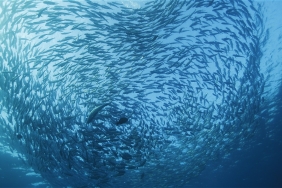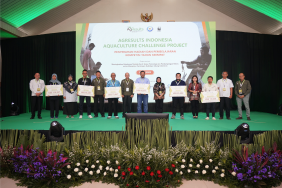BUILDING A PUBLIC DIALOG SPACE TO SAFEGUARD THE PANTAR STRAIT MARINE NATURE RESERVE IN ALOR
Author: Amkieltiela (Marine Science and Knowledge Management Officer)
Alor Regency is one of the regions in Indonesia that is rich in marine and coastal resources. However, this wealth is threatened by destructive and exploitative human activities. The results of WWF-Indonesia's Manta Tow survey in 2013 showed a 14.9% decline in coral health (WWF-Indonesia, n.d.). Since 2006, WWF-Indonesia has assisted the Alor Regency Government in managing its conservation area. Three years later, the 400,083 hectare Alor Regional Marine Protected Area (MPA) was officially reserved through Alor Regent Regulation No. 6 of 2009 concerning the Alor MPA Reserve (WWF-Indonesia, 2013). In 2009, Alor MPA was reserved as Alor Aquatic Nature Reserve and is currently awaiting the designation of 276,693.38 ha by the Minister of Marine Affairs and Fisheries.
Lapang Island, located in West Pantar Sub-district, is one of the areas included in the Core Zone of the Alor MPA. The consultation and socialization process carried out since 2008 has been hampered by rejection from local residents. The rejection was caused by the community who did not understand that the location of the Core Zone and were worried that it would threaten the seaweed cultivation activities that became their main livelihood. To mediate the problem, WWF-Indonesia, DKP Alor, and other partners, opened a discussion room directly with the community of Lapang Island to discuss the status and location of the Core Zone.
As a result of this discussion, the Lapang Island community came to understand that the Core Zone does not intersect with the location of seaweed cultivation, which is their main source of livelihood. However, a few weeks after the discussion, it was discovered that the latest information about the Core Zone had not been widely disseminated, so there was still some resistance from the Lapang Island community.
WWF-Indonesia and its partners again conducted socialization activities as well as developing ideas on the role of indigenous peoples in the management of natural resources of the Pantar Strait Sanctuary (SAP). The idea is an 'open-close' mechanism for the Pantar Strait SAP area using a local wisdom approach called Hadingmulung.
Public space is always opened for dialog about conservation implementation. Through intensive communication, mutual respect and integrating the knowledge of each party, it is hoped that a synergy between customary management and government management can be established and contribute to the seepage effect (spill over the core zone/no-take area) to the utilization area.





